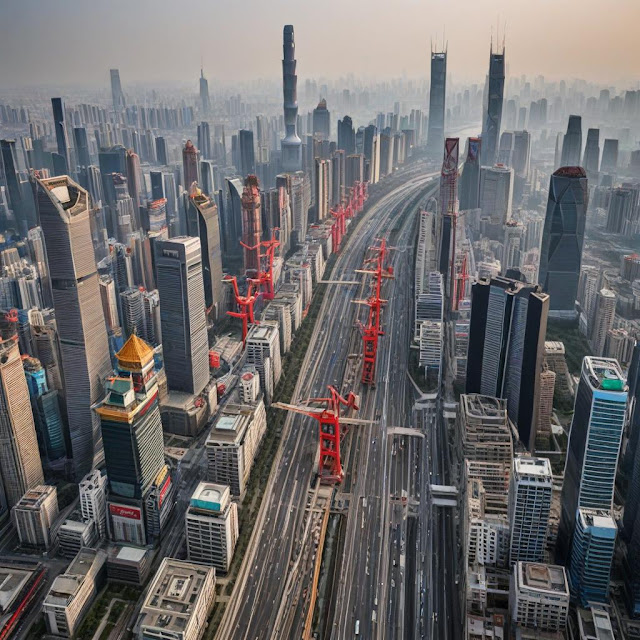1. What is the current state of China's economy in 2024?
China's economy in 2024 is navigating a complex landscape characterized by a slow recovery post-COVID, persistent structural issues, and a shift towards more sustainable growth. GDP growth is projected at around 4-5%, reflecting a cautious but steady rebound. Key sectors such as technology, green energy, and consumer goods are driving this growth, while traditional industries face challenges from overcapacity and environmental regulations.
2. How has China's manufacturing sector evolved recently?
China's manufacturing sector continues to adapt to global shifts. While it remains the world's largest manufacturer, it faces increasing competition from countries like India and Vietnam. The government is promoting high-tech industries, automation, and green manufacturing practices to enhance competitiveness. The "Made in China 2025" initiative remains pivotal, focusing on advanced manufacturing and innovation.
3. What role does technology play in China's economic strategy?
Technology is central to China’s economic strategy in 2024. The government is heavily investing in AI, 5G, and biotechnology, aiming to become a global leader in these fields. Initiatives like the Digital Silk Road are fostering technological partnerships with other countries. However, tensions with the U.S. over technology access and intellectual property remain a significant hurdle.
4. How is China addressing its real estate sector issues?
The real estate sector, once a cornerstone of China's growth, faces a significant downturn due to over-leverage and regulatory crackdowns. In 2024, the government is implementing measures to stabilize the market, including easing mortgage restrictions and supporting financially troubled developers. Despite these efforts, a full recovery is still uncertain, and the sector's long-term sustainability is a major concern.
5. What is the status of foreign investment in China?
Foreign investment in China has seen fluctuations in 2024, influenced by geopolitical tensions and regulatory changes. While some sectors, particularly technology and green energy, remain attractive, companies are cautious. The government is working to create a more favorable environment by enhancing intellectual property protections and simplifying administrative processes, but challenges persist.
6. How is China managing its trade relationships, particularly with the U.S.?
China's trade relationship with the U.S. in 2024 is marked by cautious engagement. Although tariffs remain in place, both countries are exploring dialogue to resolve outstanding issues. China continues to diversify its trade partnerships, focusing on regional agreements like RCEP and strengthening ties with emerging markets to mitigate reliance on the U.S. market.
7. What are the challenges China faces in achieving sustainable growth?
China's path to sustainable growth is impeded by several challenges, including environmental degradation, an aging population, and rising debt levels. The government aims to transition to a more consumption-driven economy, but structural issues like income inequality and urban-rural disparities hinder progress. Moreover, achieving carbon neutrality by 2060 adds pressure to balance economic growth and environmental sustainability.
8. How is the government addressing income inequality and social stability?
Income inequality remains a pressing issue in China, exacerbated by rapid urbanization and economic disparities. In 2024, the government is focusing on policies to boost social welfare, enhance education access, and support rural development. Initiatives like the "Common Prosperity" campaign aim to redistribute wealth and improve living standards, although implementation varies across regions.
9. What is the outlook for China’s economic growth in the coming years?
The outlook for China's economic growth remains cautiously optimistic. While GDP growth may stabilize around 4-5% in the short term, long-term prospects depend on successful reforms in technology, consumption, and sustainability. The government's focus on innovation and structural adjustments is crucial for maintaining resilience in an increasingly competitive global environment.
10. How is China adapting to global economic trends, such as decoupling and digitalization?
China is proactively adapting to global economic trends. The shift towards decoupling with Western economies is prompting China to strengthen its domestic market and innovate in technology. Digitalization is also a priority, with investments in digital infrastructure and e-commerce. The government encourages the growth of a digital economy to enhance efficiency and competitiveness in the global market.


